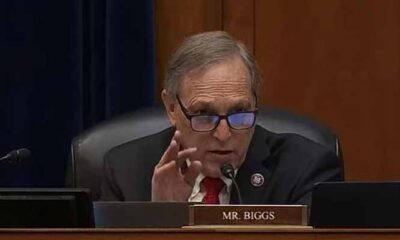arizona
GOP’s 1,000-Voter Precinct Proposal Set to Hit Arizona Counties with $53 Million Price Tag

A proposed Republican initiative that mandates voters to cast ballots at neighborhood voting sites could impose a substantial financial burden on Arizona counties, costing over $50 million in its inaugural year and more than $20 million in subsequent election years. The plan, which seeks to limit precincts to 1,000 voters each, would necessitate the establishment of nearly 4,000 new voting locations across the state.
Jen Marson, executive director of the Arizona Association of Counties, has voiced concerns to lawmakers regarding the proposal’s impracticality and its significant fiscal implications. Earlier this year, Rep. Alexander Kolodin, a Scottsdale Republican, expressed skepticism about county officials’ warnings concerning the logistic challenges and costs of their election reform plans.
Supporters, including Kolodin, argue that smaller precinct sizes would reduce long lines on election day and eliminate delays related to printer issues seen in the 2022 election in Maricopa County. They claim that by placing precincts closer to voters’ homes, the voting process would become more accessible.
However, legislative budget analysts have verified the financial estimation outlined by the Arizona Association of Counties. Marson stated, “I’m not worried when people say that they don’t trust our numbers because I know that they’re right.” The Joint Legislative Budget Committee’s (JLBC) fiscal note detailed a projected cost of approximately $53 million in the first election year and over $21 million for each subsequent election.
The implementation expenses include around $31.5 million for new equipment for the additional voting locations mandated by the proposal. This estimate is based on acquiring electronic poll books and devices for voters with disabilities, which would significantly add to the counties’ operational budget.
Every primary and general election following the proposal’s enactment could cost counties an additional $10.8 million for renting voting locations and staffing each site. Though some cost offsetting might occur from the proposed elimination of early voting centers, those savings would likely be minimal compared to the additional expenses.
The resolution aims to place the precinct-only voting measure on the 2026 ballot, reflecting House Bill 2017, which seeks a direct change in state law. Both initiatives, introduced by Rep. Rachel Keshel, have passed the House along party lines and could reach a Senate vote imminently; however, HB 2017 may face a veto from Democratic Gov. Katie Hobbs. HCR 2002 is a potential workaround to avoid the governor’s review by sending the issue directly to voters.
Should this proposal succeed, it would notably shift voting procedures in counties currently employing voting centers, where any registered voter can cast their ballot at any participating site. The new system would limit voting rights to designated precincts, risking ballot disenfranchisement for those who vote outside their assigned locations.
In Maricopa County alone, implementing the precinct model would require opening over 2,400 new voting sites and hiring more than 17,000 poll workers. Comparatively, in the 2024 general election, only 246 vote centers were available, staffed by around 4,000 workers.
Marson pointed out the logistical challenges stated that the county would struggle to meet such staffing requirements given their current limitations. The last instance of precinct-based polling in Maricopa County saw 671 polling places in 2016.
Both proposals represent repeats from the previous year, which did not pass in the Senate. During a January committee meeting, Marson emphasized the substantial operational hurdles counties would face if these changes were enacted. She noted that discussions have persisted regarding the potential impact on the state’s Division of Developmental Disabilities (DDD), which requires supplemental funding to continue services for thousands of families reliant on them.
Amidst the funding disputes, all House Republicans advocating for cuts to the DDD program supported Keshel’s proposal prior to JLBC’s fiscal note publication. Despite these developments, Keshel did not provide a comment regarding the fiscal analysis.


















